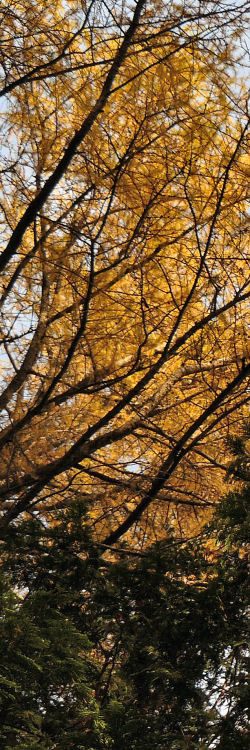Southern Deciduous Swamps and Floodplain Forests
Also known as the elm-ash-cottonwood type, these forests occur in the floodplains of rivers and streams, poorly drained former lakebeds, and wet depressions. Soils vary from sand to clay, but all are poorly drained with neutral to slightly acid pH. Signature tree species are silver maple, red maple, green ash, black ash, American elm, cottonwood, and black willow. Also common, but usually found in smaller numbers, are quaking aspen, peachleaf willow, crack willow, boxelder, swamp white oak, bur oak, pin oak, slippery elm, sycamore, and yellow birch. The elms, however, have declined markedly due to Dutch elm disease and ashes now are being decimated by the emerald ash borer. A unique subtype is the relict tamarack-dominated wetlands that are scattered throughout southern Michigan. Though the elm-ash-cottonwood type occupies about 1.6 million acres in southern Michigan, the amount of timber harvested from it is relatively small due to its proximity to water.
Northern Hardwood Conifer Swamps
These poorly drained, seasonally inundated communities are found on northern floodplains, glacial lake plains, and morainal stream headwaters. Slightly acid to neutral soils are sandy to sandy loam in texture or muck over a mineral substrate. The signature hardwood is black ash, but green ash, yellow birch, American elm, red maple, and balsam poplar also occur. Scattered conifers—balsam fir, tamarack, northern white cedar, white pine, and hemlock—may be present. This common wetland type has little commercial timber value. It is found throughout the northern Lower Peninsula (about 500 thousand acres) and the Upper Peninsula (about 350 thousand acres).
Northern Cedar Swamps
These forests are found along streams and drainageways, adjacent to inland lakes, in abandoned embayments and interdunal swales along the Great Lakes, and in wet depressions. Surface soils are acid, organic muck or peat, but subsurface soil layers may be neutral or slightly alkaline in pH, especially where they overlie limestone or dolomitic bedrock. Forest structure and composition are strongly influenced by a constant flow of cold, mineral-rich groundwater through the soil. One singular conifer, often occurring in nearly pure stands, defines this type: northern white cedar. Tamarack also can be present, sometimes dominating the cedar. Associated trees include white pine, white spruce, black spruce, balsam fir (often in the understory), hemlock, red maple, black ash, paper birch, yellow birch, American elm, quaking aspen, and balsam poplar. Total state area of this type is about 1.35 million acres, with nearly half in the eastern Upper Peninsula. Cedar is an important source of posts, poles, and cabin logs, but its long-term future is uncertain because of excessive browsing by deer, especially in winter yarding areas.
Northern Conifer Bogs and Muskegs
This type occupies former lakes and ponds that have filled in with undecomposed plant residues over the course of thousands of years. Soils are deep, poorly drained or undrained, very acid, saturated peats devoid of groundwater influence—an infertile and stressful soil environment. The stress is obvious in muskegs, where trees are scattered and stunted. Conifers dominate this type, with black spruce often forming pure stands. Frequent associates include tamarack, balsam fir, and jack pine (on sandy hummocks or ridges), along with occasional white pines and northern white cedar. These distinctive northern wetlands are found mostly in the Upper Peninsula, although they do occur in the northern Lower Peninsula, occupying about 465,000 acres state-wide. They are of no commercial value. |
 |
![]()
![]()

